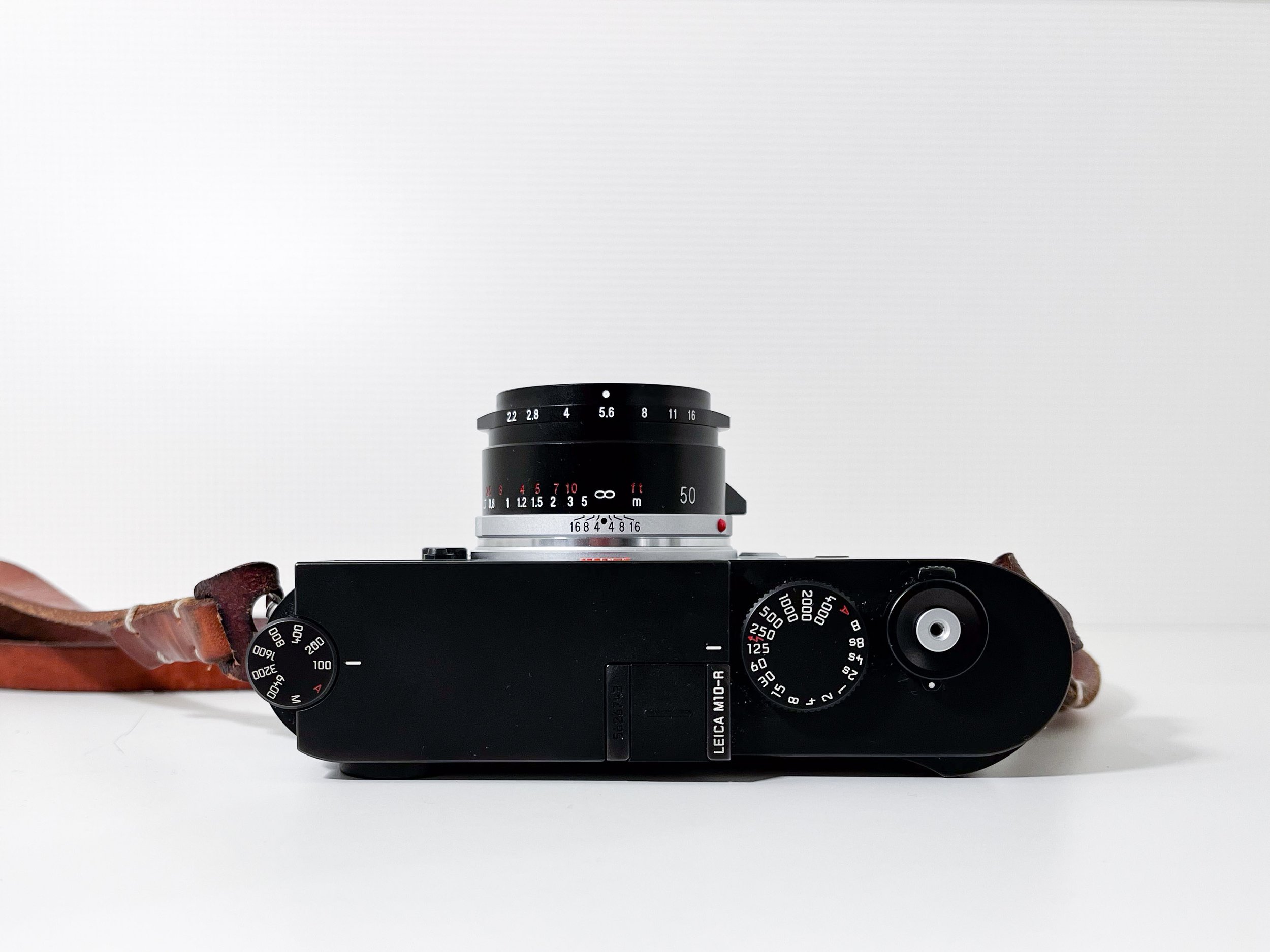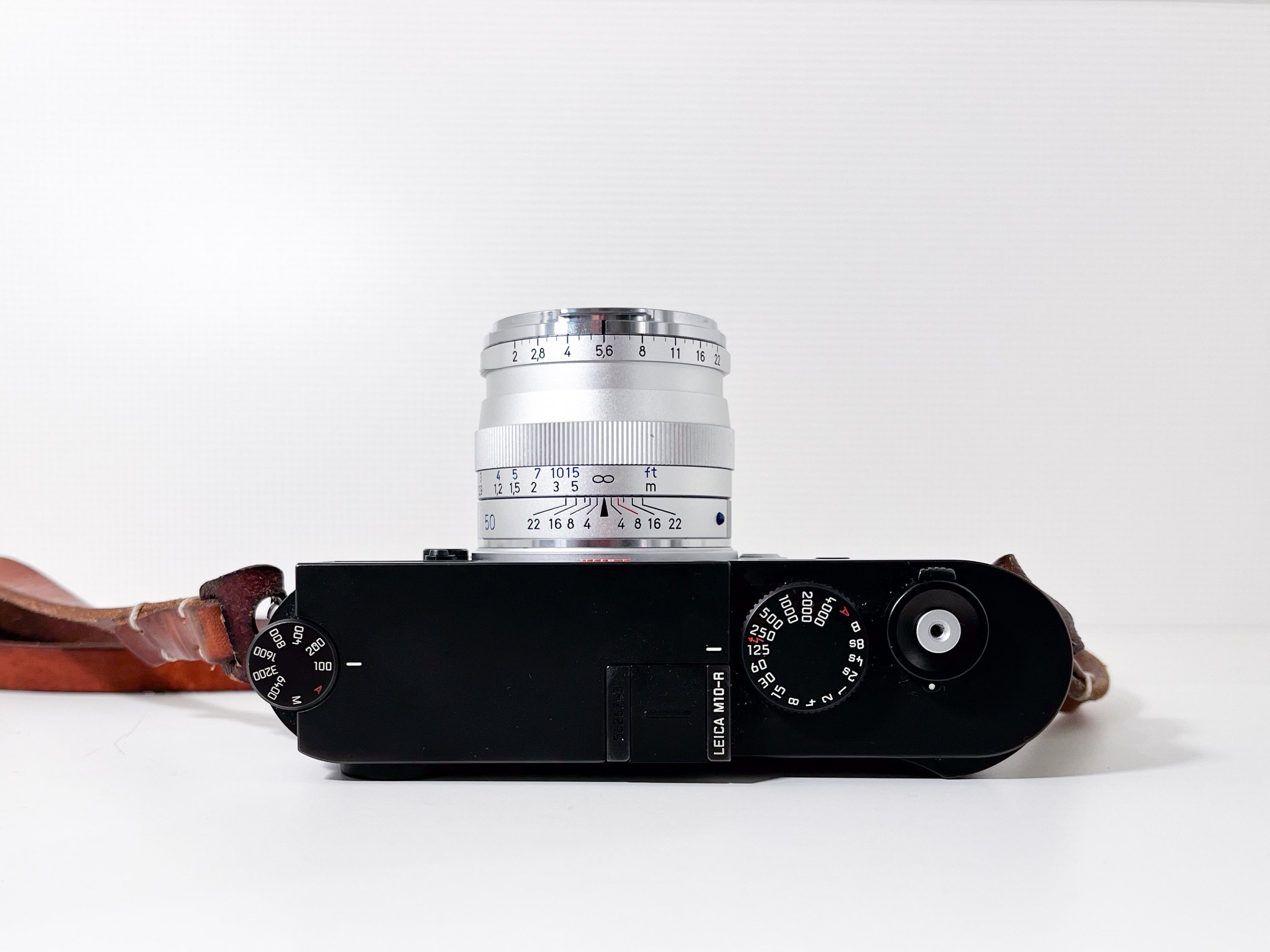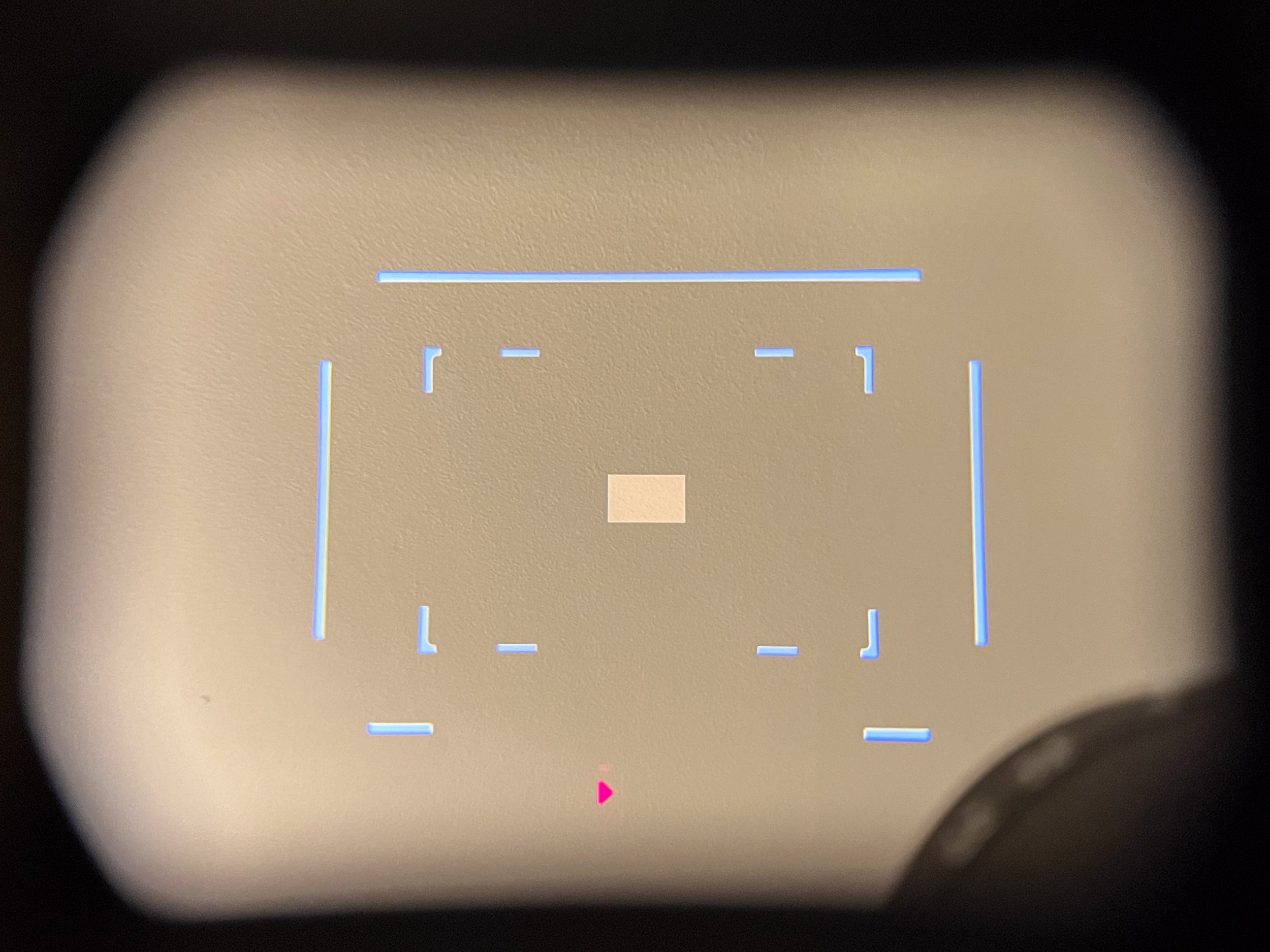Updated March 2025
Introduction
The announcement of the Voigtlander 50/2.2 Color-Skopar didn’t initially grab my attention. The M-mount 50mm f/2 space is already crowded with superb lenses. I used to own the Voigtlander 50/2 APO which achieves incredible image quality while remaining reasonably compact and affordable. I then transitioned to the Zeiss 50/2 Planar when I stumbled upon a like-new copy for $400. That lens still provides excellent image quality and is delightfully small and light.
But despite already having an essentially perfect 50mm lens, I slowly became tempted to buy the new Voigtlander 50/2.2 for two reasons. First, it focuses down to 0.5m, which I find highly useful on my M10-R. Second, I love small lenses and the 50/2.2 is even smaller and lighter than the Zeiss Planar. For only $600 new I decided to give it a shot.
In this review I’ll be comparing the 50/2.2 to the 50/2 Planar as I suspect a lot of people will be deciding between these two, including myself. And since the Planar is optically almost identical to the Leica 50 Summicron non-APO, it will serve as a comparison to that lens by proxy.
Voigtlander 50/2.2 @f/4, Leica M10-R
Voigtlander 50/2.2, Leica M10-R
About this lens
The lens comes in two versions, black and silver, which are both made from aluminum. The optical design uses no aspherical elements and no floating elements. The minimum focus distance is 0.5m and unlike the Leica lenses with <0.7m focusing, there is no click indicating when the lens steps into the close-focus range.
Build quality and mechanics
Every Voigtlander lens that I’ve tried in recent years has had impeccable build quality and this lens is no exception. All of the construction is metal and it feels as nice in the hand as any Leica lens. The focus and aperture rings are buttery smooth; using the focusing tab is a breeze. The lens comes with a small metal hood which screws onto the filter threads and feels very solid.
Size and handling
If the size category for the Zeiss 50 Planar is “compact,” then the category for the Voigtlander 50/2.2 is “adorable.” Only a few other M mount lenses are this size or smaller, and no other mainstream 50mm lenses are this small. The 50/2.2 balances very nicely on my M10-R; in fact, it adds almost no noticeable weight to the camera. The focusing tab is a joy to use and the aperture ring is perfectly placed.
Viewfinder blockage
An additional perk of this lens’s tiny size is there is no viewfinder blockage except for about 1% of the frame at 0.7m with the hood attached.
0.7m, without hood
0.7m, with hood
Minimum focus distance
Dealing with a 0.7m minimum focusing distance is a frequent frustration for me with M lenses, especially since I like to take pictures of food. When used on cameras with liveview, the Voigtlander 50/2.2’s 0.5m minimum distance significantly increases the maximum reproduction ratio:
Zeiss 50/2 @0.7m
Voigtlander 50/2.2 @0.5m
A lot of people complain about the lack of haptic feedback when focusing closer than 0.7m, but I haven’t found this to be much of a problem. It’s easy to tell when the rangefinder is no longer coupled, because the rangefinder patch will no longer be moving as you turn the focus ring.
Having this high of a magnification at my fingertips has been really convenient for food photography, which I previously could only do by attaching a close-up filter.
Voigtlander 50/2.2 @f/3.4, 0.5m, Leica M10-R
Voigtlander 50/2.2, 0.5m, Leica M10-R
Voigtlander 50/2.2 @f/3.4, 0.5m, Leica M10-R
Light transmission
If there’s any reason to choose the Zeiss Planar over the Voigtlander, it might be the slight difference in f-stop. I wanted to see the true difference in light transmission so here’s a side-by-side of both lenses wide open with the same ISO and shutter speed:
Voigtlander 50/2.2 @f/2.2
Zeiss 50/2 @f/2
The Zeiss looks about 1/3 stop brighter than the Voigtlander, and there’s noticeably more background blur. It’s not a huge difference but could tip the scales for those who find f/2 to already be on the slower side for their use cases.
Image quality
Distortion:
The Voigtlander has minimal pincushion distortion that I will likely never feel the need to correct in Lightroom. The Zeiss has minimal barrel distortion that I also have never felt the need to correct.
Vignetting:
I normally don’t do formal vignetting tests unless it’s unusually strong, which is definitely the case here:
Voigtlander 50/2.2 @f/2.2, uncoded
Voigtlander 50/2.2 @f/2.2, coded as 50 Summicron
Zeiss 50/2 @f/2, uncoded
Zeiss 50/2 @f/2, coded as 50 Summicron
Voigtlander 50/2.2 @f/8, uncoded
Voigtlander 50/2.2 @f/8, coded as 50 Summicron
Zeiss 50/2 @f/8, uncoded
Zeiss 50/2 @f/8, coded as 50 Summicron
Analysis: The Voigtlander has a strong vignette at f/2 that needs to be corrected in post, whereas the Zeiss’s vignetting has never been noticeable to me. Using a 50mm lens profile on my M10-R doesn’t sufficiently correct the Voigtlander’s vignetting; in fact the difference is barely noticeable.
Thanks to Fred Miranda’s review we know that the Voigtlander’s optical vignetting is actually not worse than other 50mm lenses (meaning the bokeh circles are relatively full in the periphery). Commenters have also been noticing that vignetting is well controlled on film. I suspect what’s going on here is the Voigtlander’s strong vignetting may be due to steep ray angles on the sensor, an issue that typically affects wider angle lenses. Notice how much further back the rear element is on the Voigtlander compared to the Zeiss Planar:
Ultimately, all this means is that I’ll be using a Lightroom preset to correct vignetting with the Voigtlander 50/2.2, which only adds a single click to my workflow. I wouldn’t consider it a significant downside versus the Zeiss.
Bokeh:
The Voigtlander’s background blur has some harshness to it due to slight “soap-bubble bokeh.” This could be a downside for some people but it generally doesn’t bother me, and in fact some people seek out vintage lenses specifically for this type of rendering (e.g. the 8 element 35 Summicron).
Voigtlander 50/2.2 @f/2.2, Leica M10-R
Voigtlander 50/2.2 @f/2.2, Leica M10-R
Otherwise, the bokeh looks pleasing to me, including clean transition zones. There are no aspherical elements and therefore onion ring bokeh is not a concern.
In terms of comparison, the Zeiss Planar has very similar bokeh, although you will get more of it at f/2 than is possible with the Voigtlander.
Voigtlander 50/2.2 @f/2.2, Leica M10-R
Voigtlander 50/2.2 @f/2.2, 0.5m, Leica M10-R
Longitudinal chromatic aberration:
Both lenses have slight green-magenta LoCA which can show up as mild green outlining of bright objects in the background. It’s not strong enough to bother me with either the Voigtlander or Zeiss. I couldn’t even find a picture taken with the Voigt 50/2.2 where it was visible.
Lateral chromatic aberration:
No significant lateral CA with either the Voigtlander or Zeiss.
Sharpness, infinity:
Overview
Center, Voigtlander 50/2.2 @f/2.2
Center, Voigtlander 50/2.2 @f/4
Center, Zeiss 50/2 @f/2
Center, Zeiss 50/2 @f/4
Mid-frame, Voigtlander 50/2.2 @f/2.2
Mid-frame, Voigtlander 50/2.2 @f/4
Mid-frame, Zeiss 50/2 @f/2
Mid-frame, Zeiss 50/2 @f/4
Corner, Voigtlander 50/2.2 @f/2.2
Corner, Voigtlander 50/2.2 @f/4
Corner, Zeiss 50/2 @f/2
Corner, Zeiss 50/2 @f/4
Analysis: Both lenses deliver plenty of sharpness for me even on the 40MP M10-R sensor, but extreme pixel-peeping reveals that the Voigtlander is just a tad sharper in all zones wide-open.
Sharpness and focus shift, 1.2m:
Overview
Center, Voigtlander 50/2.2 @f/2.2
Center, Voigtlander 50/2.2 @f/4
Center, Zeiss 50/2 @f/2
Center, Zeiss 50/2 @f/4
Mid-frame, Voigtlander 50/2.2 @f/2.2
Mid-frame, Voigtlander 50/2.2 @f/4
Mid-frame, Zeiss 50/2 @f/2
Mid-frame, Zeiss 50/2 @f/4
Corner, Voigtlander 50/2.2 @f/2.2
Corner, Voigtlander 50/2.2 @f/4
Corner, Zeiss 50/2 @f/2
Corner, Zeiss 50/2 @f/4
Analysis: At closer distances, the Zeiss has more noticeable spherical aberration in the center, which unfortunately causes some focus shift when stopped down to f/2.8-f/4. Meanwhile the Voigtlander is tack-sharp in the center at f/2.2 and is completely free of focus shift. In the mid-frame and corners, both lenses perform similarly well and are plenty sharp for my use cases.
Sharpness and focus shift, 0.7m:
Overview
Center, Voigtlander 50/2.2 @f/2.2
Center, Voigtlander 50/2.2 @f/4
Center, Zeiss 50/2 @f/2
Center, Zeiss 50/2 @f/4
Analysis: Similar to at 1.2m, both lenses are sharp wide-open but the Voigtlander is a tad sharper and free of focus shift, whereas the Zeiss’s focus shift is noticeable.
Sharpness, 0.5m:
Overview
Center, Voigtlander 50/2.2 @f/2.2
Center, Voigtlander 50/2.2 @f/4
Analysis: I would not hesitate to use the Voigtlander wide-open even at 0.5m.
Summary and recommendations
It is hard to find fault with this new 50mm f/2.2 from Voigtlander. There is strong vignetting wide-open but this only adds a single click in Lightroom to my workflow. Otherwise, this lens has excellent image quality including sharpness and control of chromatic aberrations. It practically disappears onto the camera due to its minuscule size and weight. It allows focusing to 0.5m which provides some of the highest magnification available on an M-mount lens. And at $600 new, this is a serious contender for the best value 50mm lens for M-mount.
As stated in the introduction, I never thought I would find a reason to sell my trusty Zeiss 50 Planar, but I ultimately decided to keep this new Voigtlander instead. The slight sacrifice of maximum aperture is easily justified by the 0.5m focusing and size difference. The increased sharpness and lack of any focus shift are also a nice bonus.
This lens is now my number one recommendation for a 50mm M-mount lens and is also a top contender for best starter M-mount lens. Anyone buying their first Leica rangefinder camera should seriously consider pairing it with this lens.
The way I see it, only a few other 50mm lenses jump out as worthy alternatives to consider. The Voigtlander 50/2 APO (review) was my previous number one recommendation. It’s only $400 more than the 50/2.2 and offers even more impressive optical performance, without adding too much size or weight. For me personally, the optical performance of the 50/2.2 is already so good that it’s hard to justify giving up the 0.5m focusing in exchange for APO performance.
If there’s any other 50mm lens I might go back to, it’d be the Leica 50 Summilux ASPH (review). It’s bigger, less ergonomic, and almost an order of magnitude more expensive than the Voigtlander 50/2.2, but it offers significantly shallower depth of field while maintaining superb central image quality. If I ever get tired of limiting myself to f/2.2 with the 50mm focal length, I might go back to owning the 50 Summilux ASPH, in addition to the Voigtlander 50/2.2.
The Voigtlander 50/1.5 II (review) is also a good lens for the money. I had issues with how it rendered at f/1.5 but it’s certainly worth considering. Finally, I’ve never tried the Voigtlander 50mm f/1.2 or Voigtlander 50mm f/1.0, but I find them intriguing and might experiment with one of them some day.
Voigtlander 50/2.2 @f/2.2, Leica M10-R
Voigtlander 50/2.2, Leica M10-R
Voigtlander 50/2.2 @f/2.8, Leica M10-R
Good
Image quality
Build quality
Size and handling
Price
0.5m MFD
Bad
Slightly slower than the 50mm f/2 alternatives
Vignetting when used on digital
Buy here
Making this website is my hobby and hosting it costs $200/year. If you decide to buy this lens and want me to get paid a commission, please complete your purchase using one of these links. Alternatively, you can buy something from my accessories page or buy me a coffee!
Other alternatives (not recommended)
Zeiss 50/2 Planar (review)
Leica 50 Summicron, non-APO (review)
I previously described these as role model 50mm lenses. They are still good lenses, but it’s become harder to recommend them given that they are more expensive than the Voigtlander 50/2.2. There are good deals for the Planar on the used market but I would not recommend paying the full retail price.
Leica 50mm f/2 APO-Summicron ASPH
This lens offers similar performance to the Voigtlander APO and is a bit better in terms of size and ergonomics. But that’s not enough to overcome its price tag of over $8000.
Voigtlander 50mm f/3.5 Heliar
This lens offers optical perfection with a fairly limited f/3.5 aperture in a tiny but odd-looking package. For a similar price you can just get the Voigtlander 50/2.2, so I’m not sure who this lens is for.
Zeiss 50mm f/1.5 Sonnar
Voigtlander 50mm f/1.5 Heliar
These lenses use vintage optical designs and should only be used by those who intentionally want soft, dreamy images with lots of aberrations. They also have very strong focus shift, which makes them a pain to use on rangefinders.
Additional reading
More sample photos
Voigtlander 50/2.2, Leica M10-R
Voigtlander 50/2.2, Leica M10-R
Voigtlander 50/2.2 @f/4, Leica M10-R
Voigtlander 50/2.2 @f/2.2, Leica M10-R
Voigtlander 50/2.2 @f/5.6, Leica M10-R
Voigtlander 50/2.2 @f/5.6, Leica M10-R
Voigtlander 50/2.2 @f/2.2, Leica M10-R
Voigtlander 50/2.2 @f/2.2, Leica M10-R
Voigtlander 50/2.2 @f/8, Leica M10-R
Voigtlander 50/2.2 @f/8, Leica M10-R




























































